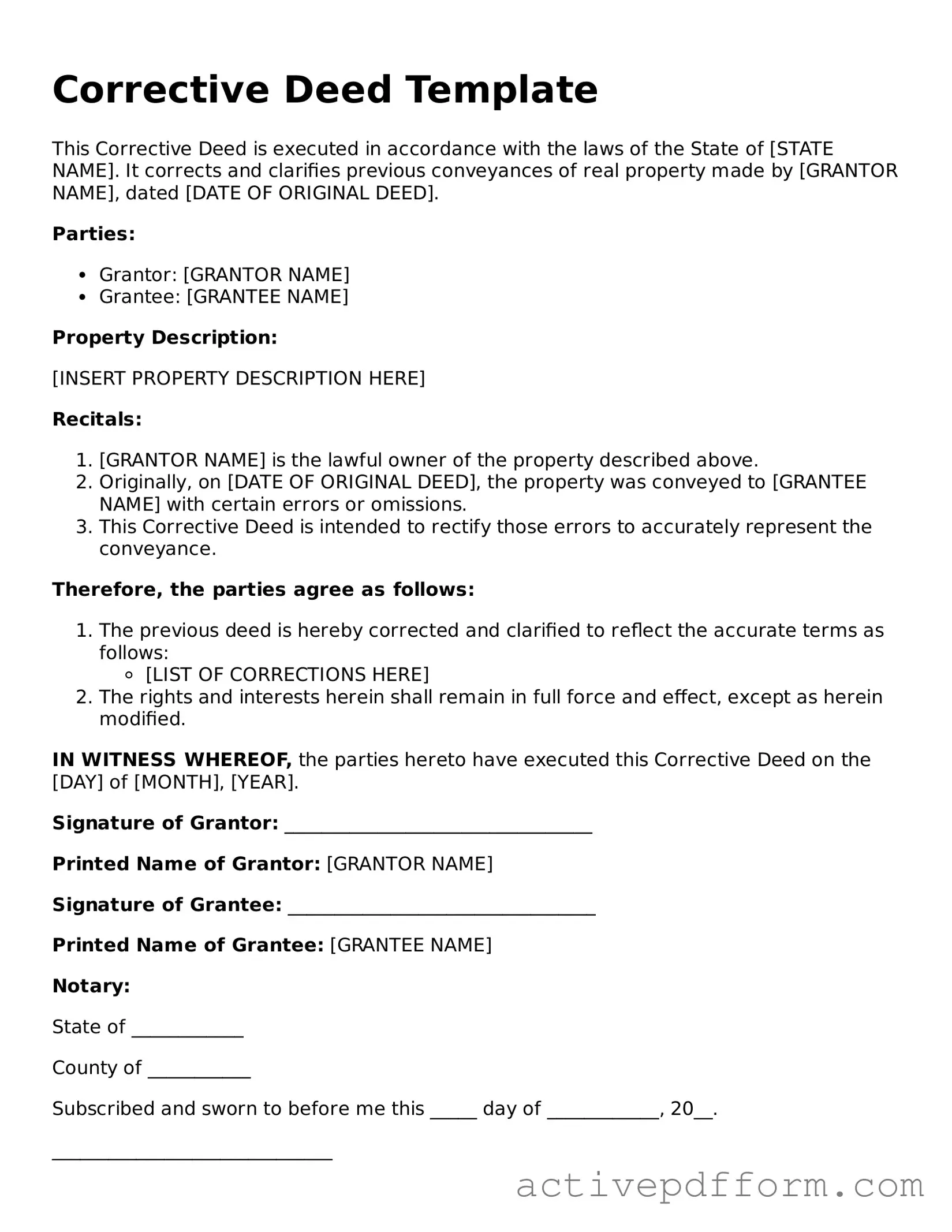Corrective Deed Template
This Corrective Deed is executed in accordance with the laws of the State of [STATE NAME]. It corrects and clarifies previous conveyances of real property made by [GRANTOR NAME], dated [DATE OF ORIGINAL DEED].
Parties:
- Grantor: [GRANTOR NAME]
- Grantee: [GRANTEE NAME]
Property Description:
[INSERT PROPERTY DESCRIPTION HERE]
Recitals:
- [GRANTOR NAME] is the lawful owner of the property described above.
- Originally, on [DATE OF ORIGINAL DEED], the property was conveyed to [GRANTEE NAME] with certain errors or omissions.
- This Corrective Deed is intended to rectify those errors to accurately represent the conveyance.
Therefore, the parties agree as follows:
- The previous deed is hereby corrected and clarified to reflect the accurate terms as follows:
- [LIST OF CORRECTIONS HERE]
- The rights and interests herein shall remain in full force and effect, except as herein modified.
IN WITNESS WHEREOF, the parties hereto have executed this Corrective Deed on the [DAY] of [MONTH], [YEAR].
Signature of Grantor: _________________________________
Printed Name of Grantor: [GRANTOR NAME]
Signature of Grantee: _________________________________
Printed Name of Grantee: [GRANTEE NAME]
Notary:
State of ____________
County of ___________
Subscribed and sworn to before me this _____ day of ____________, 20__.
______________________________
Notary Public
My Commission Expires: _____________
